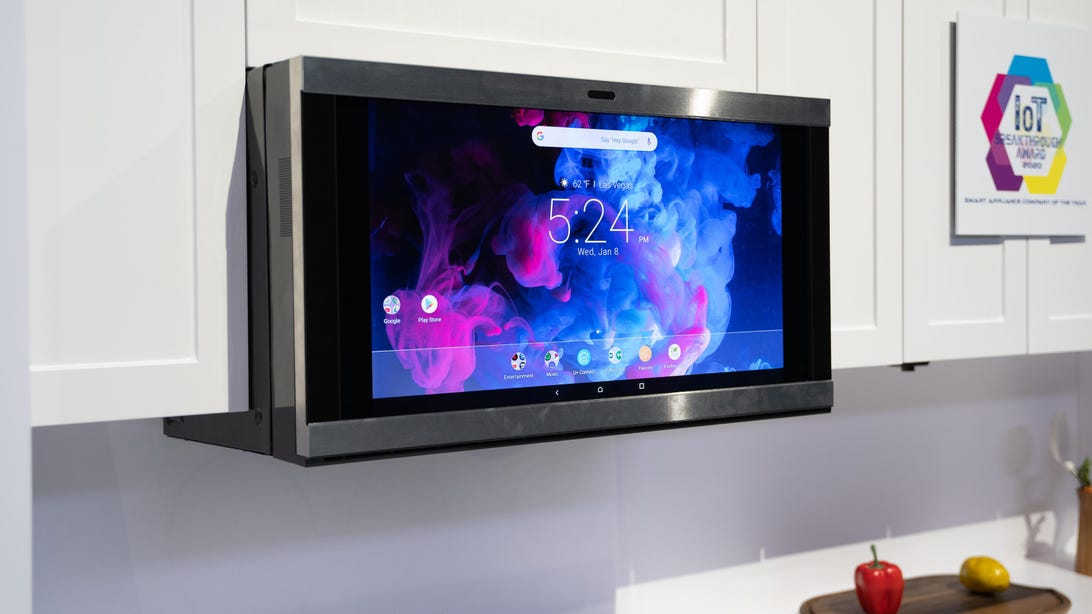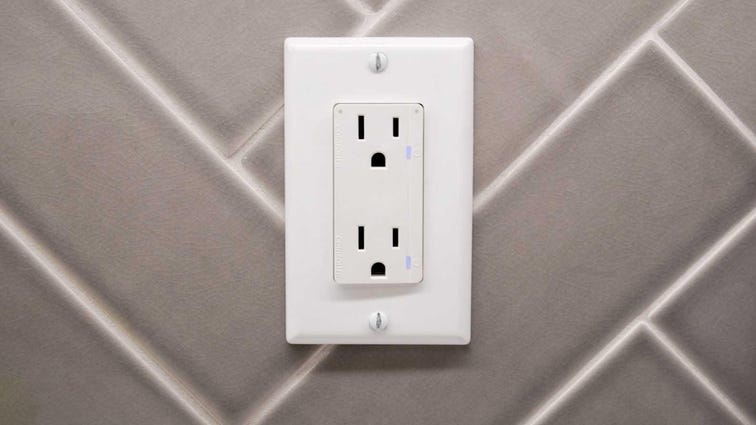
Some smart home products are meant to be flashy. You're supposed to stare at the 70-inch Roku TV or the Echo Show 10's rotating display. A porch pirate might catch a glimpse of your Arlo Video Doorbell and run away. These pieces of the smart home work best in plain sight, but others fit better in the background.
WeMo now sells a smaller version of the Wemo Wifi Smart Plug and August's most recent smart lock is 45% smaller than previous models. The best examples so far are in the smart outlet category. I tried out a few smart in-wall outlets recently, and I hope more smart home categories pick up on the trend.
TP-Link's Kasa line of smart home products offer plenty of options for smart power, including our favorite smart plug and a smart power strip. The newest addition is an in-wall outlet. If you're keen to ditch clunky (and obvious) smart plugs, you can replace them with the Kasa Smart Wi-Fi Power Outlet in-wall option.
At $30 (about £25 or AU$45), it's affordable and works with Google Assistant and Amazon Alexa for routines, app control and voice commands. That's not any more expensive than buying two smart plugs and it's certainly more aesthetically pleasing. You won't get HomeKit compatibility with this or any other TP-Link Kasa product, so if you're after Siri smarts, you'll want to look at other options like the ConnectSense outlet below.
It doesn't take too much time to install the outlet, and you don't need to be an electrician. Of course, you should shut off the power and double check the outlet with a volt meter before touching it. Instructions in the Kasa app explain wiring, but the thing to know before you buy is that a neutral wire is required. Check your home's wiring (especially if it's older) just to be sure.
Once you've wired everything up, you'll connect to your home's 2.4GHz network and name each of the individually controllable sockets. From there, you can connect with Google or Alexa to turn the sockets on or off with your voice or include them in a routine.
If you'd like an in-wall outlet, but need HomeKit compatibility, the ConnectSense Smart In-wall Outlet gets the job done. This in-wall outlet from ConnectSense works with Siri, as well as Google Assistant and Amazon Alexa for voice commands.
At $80, it's quite a bit more expensive than the Kasa model. You'll get energy monitoring with this model, but that's not enough for me to recommend paying $80 for it if you don't care about HomeKit compatibility.
Like the Kasa outlet, each socket is individually controllable, and a ConnectSense app and installation booklet guide you through getting the outlet in place and set up. There are 20 amp and 15 amp versions to fit your home's electrical situation. The ConnectSense model doesn't offer a randomizing away mode the way the Kasa outlets do, but it does have scenes and schedules.
Like the ConnectSense outlet, this $90 smart wall outlet from iDevices works with all three major voice assistants, letting you turn whatever's plugged into each outlet on and off using your voice. You can turn each of its two outlets on and off individually or opt to schedule them in the iDevices app.
In addition to voice commands and scheduling, iDevices app also monitors the energy consumption of each socket, so you can keep an eye on how much power each plugged in device uses. It's similar to the ConnectSense product. So much so that the only tiebreaker I can see is whether or not you already have iDevices or ConnectSense products in your home. If you do, I'd stick with your current brand to keep your third-party apps to a minimum.
More undercover smart home
Smart outlets are the only devices out there that are smart without being ostentatious. The Level Lock, a smart lock for HomeKit and Alexa homes, sits inside your existing door hardware and smartens it without advertising that you've got tech built into your front door.
There are other products edging toward invisibility, too. These inconspicuous products are pushing the smart home towards a sleeker future. I'd love to see it extend to other smart home categories.
Level Lock fits inside your existing deadbolt. It's not much to look at, and that's the whole point. The Level Lock hides inside your door, replacing only the internal components of your existing lock. It's powered by a small battery house in the lock's deadbolt.
Level Lock works with Alexa and HomeKit and integrates with Ring. If you're in the HomeKit camp, this smart lock is a great option if you don't want to advertise how much tech is in your home by putting a fancy smart lock keypad on the front door. The Level Lock smart bolt costs $199, but you can pay $249 for a package that includes new hardware and $330 for a touch-activated model.
Mui display

The $1,000 Mui display takes an unusual approach to displaying information digitally. The wood panel incorporates LEDs and works via touch. While it's active, LEDs glow from beneath the wooden surface. When Mui is not in use, all the technology and digital info disappear.
While it's not nearly as practical as a smart outlet (and not technically out for sale yet), the Mui is a striking example of what's possible when a company focuses on blending the smart home into design and decor.
While the flashiness of a high-tech home certainly appeals to some (I enjoy the touchscreen keypad on my front door), there's a case to be made for a home that feels smart but looks traditional. These examples prove it's possible to deliver smarts without filling our homes with touchscreens.

The GE Kitchen Hub is an Android screen and range hood.
Tyler Lizenby/CNETI doubt we'll see Mui-style integrations of smart displays any time soon. However, GE's Kitchen Hub is one good example of a screen that, because it's built into an appliance, can turn off and disappear into the design of the device (a microwave door).
I can imagine, too, a day when homes are outfitted with built-in, whole-home surround sound speakers enabled with a voice assistant. Until then, we'll keep rotating the latest smart speakers and displays on our countertops.
"smart" - Google News
October 16, 2021 at 06:00PM
https://ift.tt/3FUORcU
5 subtle devices that don't scream 'smart home' - CNET
"smart" - Google News
https://ift.tt/2P2kUhG
https://ift.tt/3febf3M
Bagikan Berita Ini



















0 Response to "5 subtle devices that don't scream 'smart home' - CNET"
Post a Comment